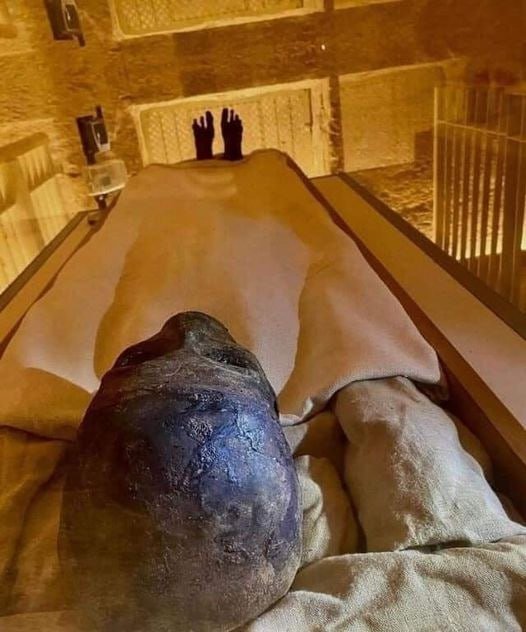In this article, you will explore photographs of Tutankhamun’s tomb in the Valley of the Kings, a precise replica of his burial site at Howard Carter’s residence, the tomb of Ay—his successor, who is believed to have taken over a tomb originally intended for Tutankhamun—and exhibits from the Cairo Museum, soon to be relocated to the Grand Egyptian Museum in Giza.

Unraveling the Mystery of Tutankhamun
Tutankhamun, also known as King Tut, ruled Egypt between 1336 and 1327 BC, though some sources suggest 1334 to 1325 BC. Prior to the discovery of his tomb in 1922 by Howard Carter, little was known about him. He was absent from the royal lists at Abydos and Karnak, which skipped from Amenhotep III to Horemheb, bypassing Akhenaten, the brief reign of Smenkhkara (believed to be Akhenaten’s brother or son), and Tutankhamun’s successor, Ay. Scholars still debate whether Smenkhkara was male or female, as well as whether Tutankhamun was a younger sibling.
During his reign, Tutankhamun reversed his father Akhenaten’s radical religious reforms, restoring Egypt’s traditional gods and returning the capital from Akhetaten (Amarna) to Thebes. Akhenaten’s monotheistic devotion to Aten, the sun disk, had made him deeply unpopular. Egyptians feared divine retribution for abandoning their old gods. Tutankhamun’s restoration of religious stability likely brought relief to the people.
Inside Tutankhamun’s Tomb
Upon entering Tutankhamun’s tomb, visitors first see his mummified remains. The burial chamber features paintings depicting his journey to the afterlife. The north wall consists of three scenes: in the first, Ay, Tutankhamun’s vizier and successor, performs the “Opening of the Mouth” ceremony, enabling the young pharaoh to communicate in the afterlife. The second scene shows Nut, the goddess of the sky, welcoming Tutankhamun. The final scene portrays Osiris embracing Tutankhamun, signifying his acceptance into the underworld.
The east wall illustrates the funeral procession, where twelve mourners in white headbands pull Tutankhamun’s mummy on a sledge. Two bald ministers, representing Upper and Lower Egypt, stand among them. The west wall, inspired by the Amduat funerary text, provides guidance for his journey through the twelve hours of the night, each represented by a baboon. A solar barque, used by the sun god Ra, is depicted, symbolizing the eternal cycle of rebirth.
A Glimpse into Tutankhamun’s Replica Tomb
A replica of Tutankhamun’s tomb at Howard Carter’s house features scenes not visible in the original, such as the south wall. This artwork depicts Tutankhamun followed by Anubis, the jackal-headed god responsible for guiding the dead and ensuring their fair judgment. He is greeted by Nekhbet, who embodies Hathor, and presents him with the ankh, a symbol of eternal life.
The tomb’s artwork employs six symbolic colors: white for purity and divinity, black for death and fertility, red for power and destruction, yellow for eternity and the gods, blue for creation and the heavens, and green for rebirth and vegetation.
The Grand Tomb Meant for Tutankhamun—But Taken by Ay
Since Tutankhamun died prematurely, he was buried in a smaller tomb. Many scholars believe the grander tomb was repurposed for Ay. Ay’s tomb contains numerous paintings similar to those in Tutankhamun’s, including depictions of baboons and the field of reeds. However, his cartouches were later erased, and his sarcophagus was defaced—likely due to his successor, Horemheb, who sought to remove Ay from history.
The Relocation of Tutankhamun’s Treasures to the Grand Egyptian Museum
Tutankhamun’s golden funerary mask, currently in the Cairo Museum, will soon be showcased at the Grand Egyptian Museum. His burial included multiple nested sarcophagi, the innermost being solid gold. Recent studies suggest that his mask was originally made for a female predecessor, possibly Nefertiti, as indicated by the pierced earlobes and differences in gold composition.
A statue of Anubis, placed at the tomb’s entrance, symbolized protection. Anubis also appeared in burial rituals, with priests donning his mask. Nearby, a gilded canopic shrine safeguarded the jars containing Tutankhamun’s mummified organs.
One of the most stunning artifacts is Tutankhamun’s golden throne, which features an intimate scene of him being anointed by his wife, Ankhesenamun, under the rays of Aten. This detail suggests it may have been created before the reinstatement of Egypt’s traditional gods or originally made for his father, Akhenaten.
The Discovery of Tutankhamun’s Tomb
Despite being one of Egypt’s most famous pharaohs today, Tutankhamun’s historical significance was relatively minor. His brief reign produced few monuments, and many of his structures were later rebranded by other rulers. His father’s religious upheaval and subsequent reversal overshadowed his rule.
Tutankhamun married his half-sister, Ankhesenamun, and they had two stillborn daughters, whose fetuses were found in his tomb. As a young ruler, he relied on advisors such as Ay and Horemheb, both of whom later claimed the throne.
Advancements in technology have provided insights into Tutankhamun’s cause of death. DNA testing in 2010 revealed traces of malaria, compounded by a degenerative bone disorder, likely contributing to his demise.
The Enduring Fame of Tutankhamun
Tutankhamun’s legacy stems largely from the incredible discovery of his tomb. Before its unearthing, most tombs in the Valley of the Kings had been looted. Howard Carter, driven by his belief in the existence of Tutankhamun’s burial site, spent years searching with financial backing from Lord Carnarvon. By 1922, Carnarvon was ready to abandon the excavation, but Carter convinced him to fund one final season.
On November 4, Carter’s perseverance paid off—thanks to an Egyptian water boy named Hussein Abdel Rasoul. While digging a hole to stabilize his water jars, he stumbled upon a carved stone step. Further excavation revealed a staircase leading to a sealed doorway, marking the entrance to the untouched tomb. Upon making a small breach in the door, Carter glimpsed the treasures within. When asked if he saw anything, he famously replied, “Yes, wonderful things.”
Tutankhamun’s tomb remains one of the greatest archaeological discoveries of all time, offering an unprecedented glimpse into the splendor of ancient Egypt and immortalizing the young pharaoh’s name in history.





